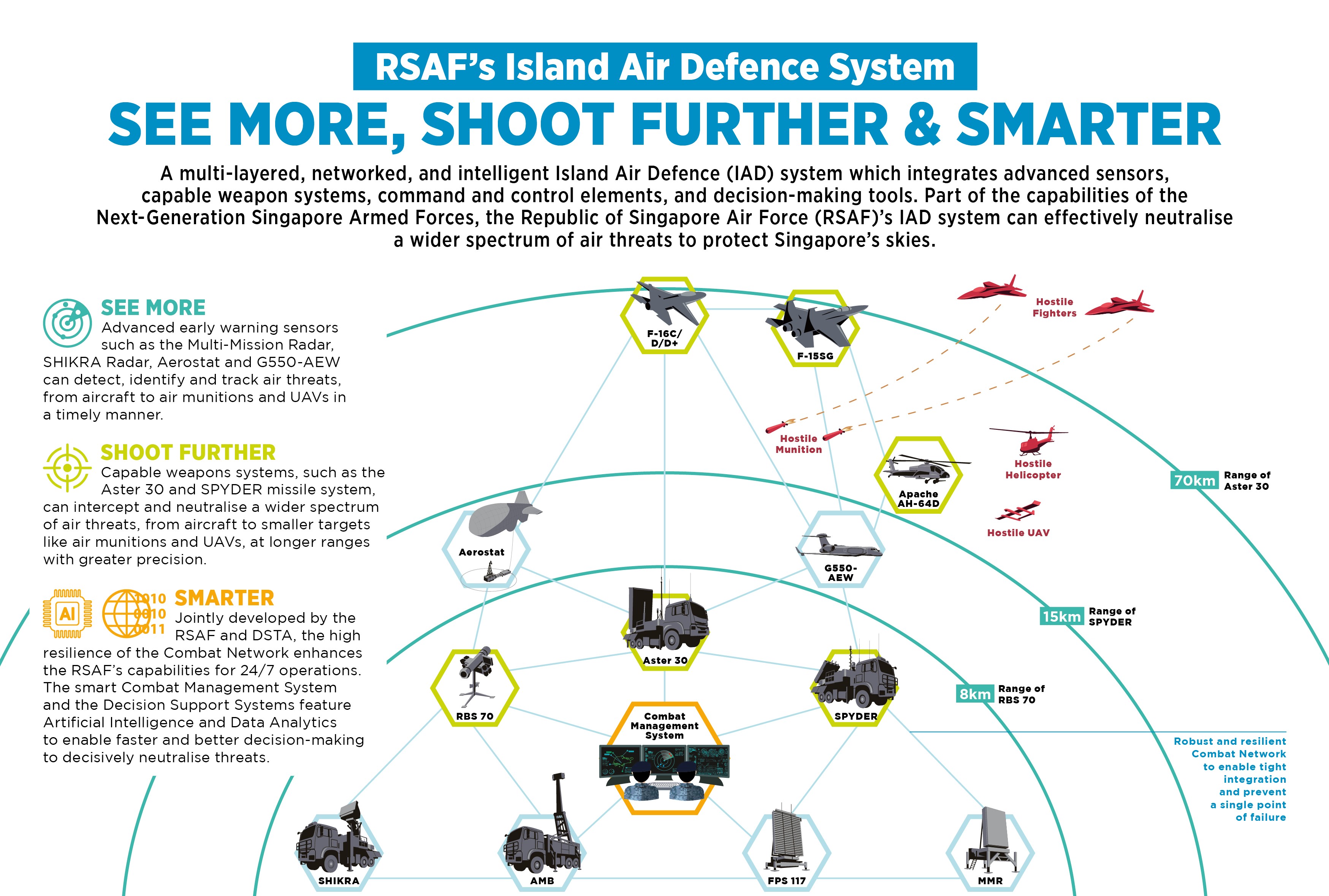Transforming Air Defence
Some say, the whole is greater than the sum of its parts. Our engineers say, that’s exactly why we transformed the RSAF’s island air defence capabilities from a legacy standalone air defence system to a multi-layered, networked and intelligent system.
The Island Air Defence (IAD) system integrates advanced sensors, weapon systems, command and control elements, and decision-making tools to protect Singapore against a wide spectrum of air threats. It includes ground-based air defence systems such as the ASTER-30 Missile System and SPYDER, and sensors such as the Multi-Mission Radar, all of which work together as a system-of-systems.
With deep insights into the RSAF’s concept of operations, the team was able to integrate best-of-breed systems to achieve a network-centric concept for air defence. This was complemented by master plans that translated the concept into a suite of capabilities, which allowed defence capabilities to be planned even before new equipment and technologies were acquired. On top of designing the system architecture, the team was also instrumental in acquiring and integrating advanced sensors and weapons within the IAD system.
Two key features of the IAD system were the smart Combat Management System and the Combat Network, which allow different air defence systems to be networked together and tailored to the RSAF’s unique operational needs. The network-centric design improves overall system robustness while allowing the RSAF to provide better island-wide air defence coverage with less manpower.
The team incorporated data analytics and artificial intelligence into the Combat Management System, which analyses, prioritises targets and recommends the most effective weapon and sensor systems to handle potential air threats. By organising and fusing data from multiple sources, the system provides a real-time comprehensive air situation picture and reduces the cognitive load on operators for faster and more informed decisions.
The Combat Network integrates various sensors, weapon systems and the smart Combat Management System for rapid and seamless dissemination of time-critical information and data to all entities within the IAD system. Senior Programme Manager (Advanced Systems) Teng Siang Loong explained: “With the Combat Network, multiple weapons and sensors are able to operate in an optimised pool of resources. This means that we’re able to provide an enhanced island-wide air defence coverage with reduced manpower, and prevent a single-point of failure due to high resiliency.”

One challenge was figuring out the best way to validate the IAD system, as many air defence scenarios could not be replicated in the real world due to factors such as cost and safety.
“By harnessing modelling and simulation tech, we created various scenarios to achieve realistic testing of new systems integrated with the IAD system. To mitigate any potential integration risks, we conducted simulated tests of the new system in a lab environment first, before deploying the actual system into the network,” Siang Loong added.
Today, the team continues to develop new ideas and concepts of operations to improve the system. Senior Principal Engineer (Advanced Systems) Oh Siew Leng shared: “We’ve had opportunities to explore cutting-edge tech in the various advanced systems that we integrated into the IAD system. We’ll continue to enhance Singapore’s air defence capability by leveraging the latest tech to develop more efficient and capable systems.”

All images credited to MINDEF.

